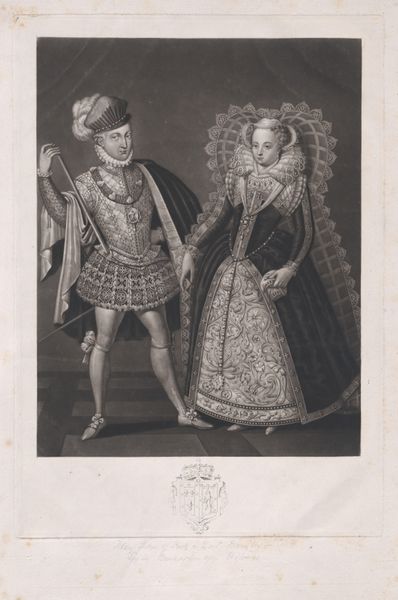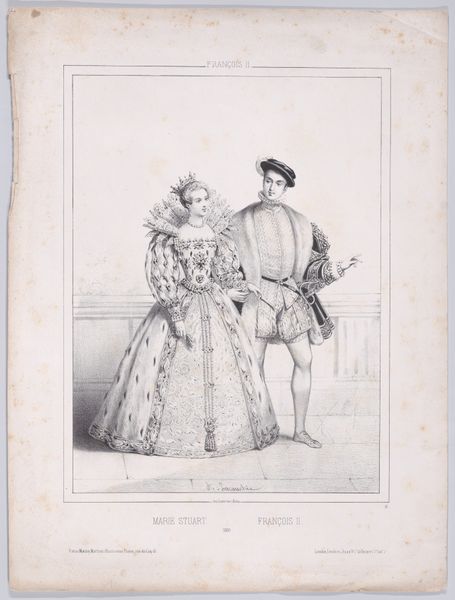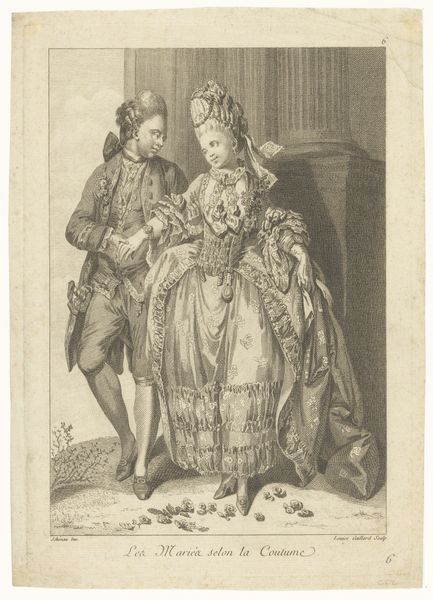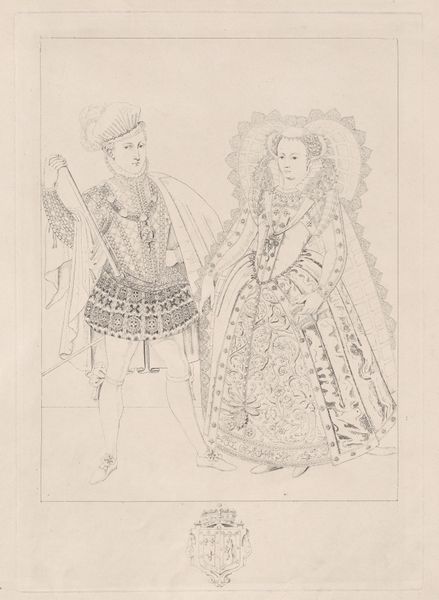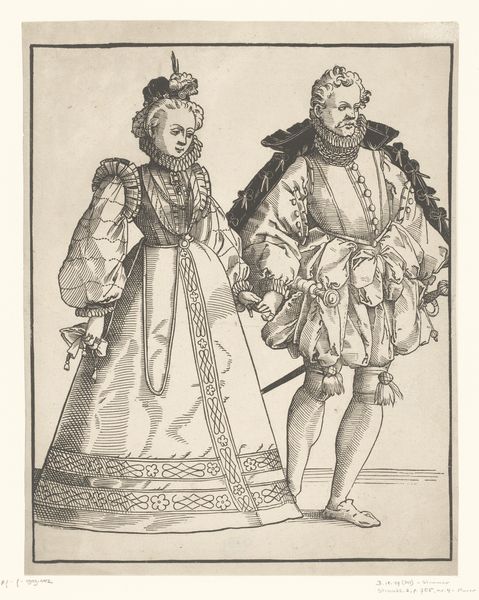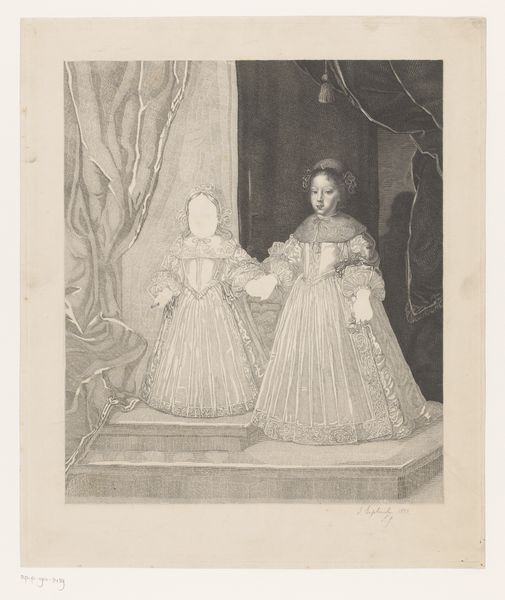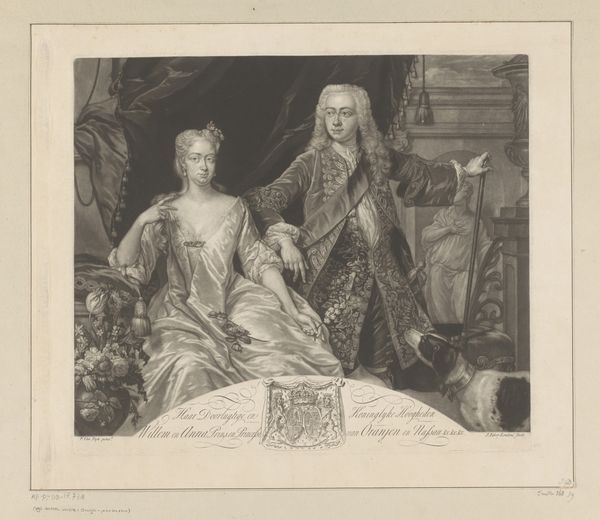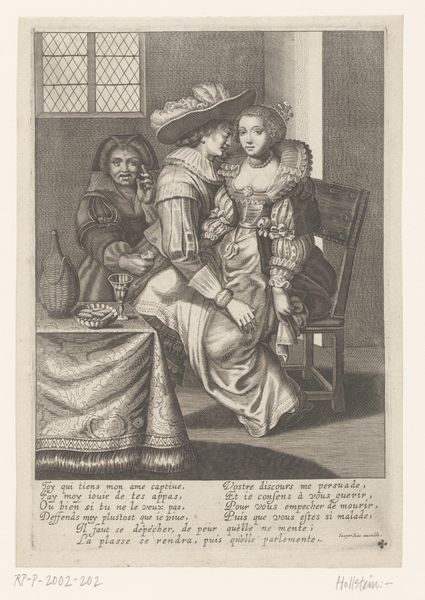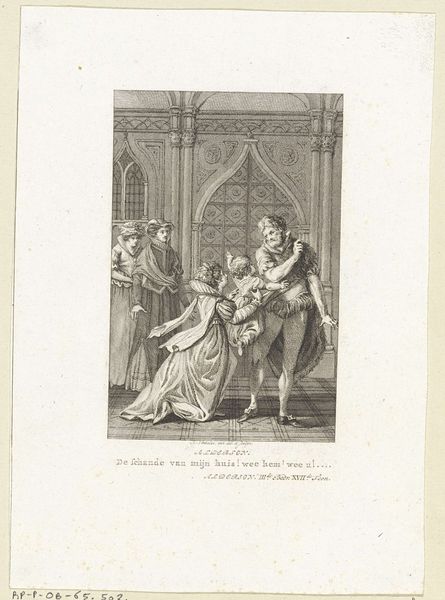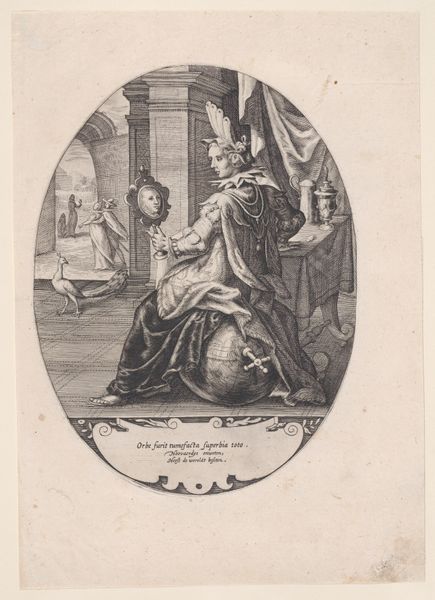
drawing, print, engraving
#
portrait
#
drawing
# print
#
figuration
#
coloured pencil
#
england
#
romanticism
#
men
#
line
#
history-painting
#
engraving
Dimensions: Plate: 14 3/4 × 10 7/8 in. (37.4 × 27.7 cm) Sheet: 16 5/16 × 12 5/8 in. (41.4 × 32 cm)
Copyright: Public Domain
This print of Mary, Queen of Scots and Lord Darnley was made by Robert Dunkarton, probably in the late 18th century. It’s made using a technique called mezzotint, a printmaking process that relies on building up tone to create an image. Think of the metal plate as a field of potential darkness. The printmaker uses a tool called a rocker to create countless tiny indentations. If printed at this stage, the plate would produce a solid black field. The image is then created by selectively burnishing or smoothing areas of the plate to varying degrees, allowing them to hold less ink and print lighter tones. The smoother the area, the less ink it holds, resulting in lighter shades of gray. The smooth parts end up being white. Mezzotint was a popular method for reproducing paintings, as it allowed for subtle gradations of tone and a rich, velvety texture. But beyond its aesthetic qualities, the process speaks volumes about the labor involved in image-making before the age of photography. The printmaker acts as a skilled interpreter, translating the original artwork into a new medium through painstaking handwork. This reminds us that every image we see has been shaped by human hands, and by the social conditions of its making.
Comments
No comments
Be the first to comment and join the conversation on the ultimate creative platform.
